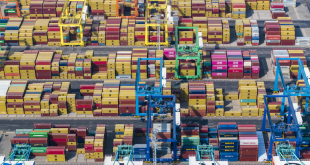
The annual meetings of the National People’s Congress (NPC) and the Chinese People’s Political Consultative Conference (CPPCC), commonly known as the “two sessions,” is China’s most important annual political event. However, this year’s meetings marked a significant turning point not only for China but globally. This was determined by the simultaneous coming together of two processes.
First, 2020 was a year in which China both overcame COVID-19 and achieved economic recovery in a way not managed by any other major country – in addition to achieving its goal of eliminating absolute poverty domestically. Second, this year’s “two sessions” laid out goals for both the next 14th Five-Year Plan (2021-2025) and China’s long-term development up to 2035. These mark a new phase in China’s development as the country will enter the ranks of “high-income” economies by international standards. This is therefore an historic transformation not only for China but for the world. As the first country to feel COVID-19’s impact, China had less time and less knowledge than any other nation to face this deadly threat. However, its unprecedented control measures successfully capped new cases, and the number of domestic new infections on the Chinese mainland dropped to essentially zero after six weeks. As noted by Martin Wolf, the chief economics commentator of the Financial Times, China’s successful actions meant that there never really was an “all China” COVID outbreak – there was a severe outbreak in Hubei, with only a limited number of cases in other regions of China. Countries which then most successfully combated the COVID-19, such as New Zealand and Vietnam, did so essentially by copying China’s responses, which was entirely to their credit.
Economic recovery
China’s rapid overcoming of COVID-19 in turn prepared the ground for its second achievement in 2020 – economic recovery. Obviously, due to the pandemic, in the first quarter of 2020 China’s economy suffered a severe blow as GDP growth contracted by 6.8% from a year ago. However, due to rapid overcoming of COVID-19, economic recovery had already begun by the second quarter of the year.
By the end of 2020, China had experienced 2.3% annual growth for 2020 as a whole, and was the only major economy to experience positive annual growth. The result of these trends was that the IMF has estimated that in 2020-2021, 60% of world economic growth will take place in China. In the entire period to 2025, 32% of world economic growth will take place in China.
Poverty alleviation and new target
China’s other huge achievement of 2020 was the elimination of absolute poverty. According to the World Bank’s international standards, China has lifted more than 853 million people out of poverty since 1981, or 75% of all those lifted out of poverty globally. Looking to the future, China unusually announced that it would be putting forward not one but two medium/long term projects to the NPC. First, the new 14th Five-Year Plan covering 2021-2025, and second, a longer-term project covering the period to 2035. These are evidently interconnected. By its own national criteria, China achieved the level of “moderate prosperity” in 2020. In terms of the World Bank’s international standards, China will pass the threshold from its present international rank of an “upper middle income” to a “high income” economy in 2022-23.
To give an indication of the scale of this achievement, the population of existing high-income economies by World Bank standards is 16% of humanity – China is 18%. The needs of high-income societies are obviously much more complex than those of underdeveloped ones. In underdeveloped societies, the dominant issue is how to satisfy basic needs – food, shelter, basic health care and education. In a high-income society, much more complex educational, medical, environmental, cultural and other needs become increasingly important.
The success of the previous five-year plans means that the 14th Five-Year Plan and the longer-term program to 2035 has a new center of gravity of beginning China’s development as a high-income society by international standards. But increasing incomes and more complex needs of the Chinese people will transform and enormously expand numerous global markets and human experiences associated with high living standards as well as enormously enriching the lives of the Chinese people themselves.
Climate change
In addition to transitioning to a high-income economy, a further decisive future task affecting not only China but all humanity was marked by the “two sessions” this year.In September 2020, China pledged two key goals regarding humanity’s common struggle against climate change – a peak in its carbon dioxide emissions before 2030 and net zero carbon emissions by 2060. These commitments were widely welcomed globally as a “game-changer” on the international struggle against catastrophic climate change, and will now necessarily be embodied in China’s economic strategy.
John Ross, Senior Fellow, Chongyang Institute for Financial Studies, Renmin University of China.
China.org.cn.
 Africa -China Review Africa -China Cooperation and Transformation
Africa -China Review Africa -China Cooperation and Transformation
